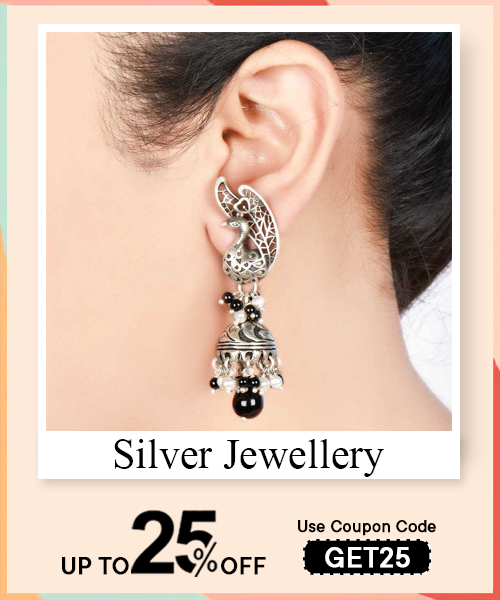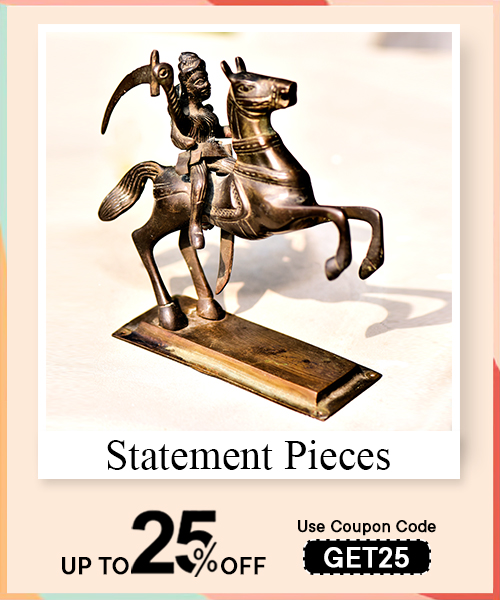Renaissance paintings capture the spirit of rebirth through meticulous composition, naturalism, and classical themes. These works pivoted from symbolic medieval flatness to vibrant realism, portraying mythological scenes, religious stories, and human portraits with renewed intensity. Color, light, and form were harmonized to create spatial depth and emotional resonance. Sacred and secular subjects coexisted, reflecting both spiritual devotion and worldly curiosity. Whether in Botticelli’s ethereal Birth of Venus or Leonardo’s enigmatic Mona Lisa, Renaissance painting was a revolution in seeing, one that fused the poetic with the scientific, turning brushstrokes into philosophy.
A Renaissance painting is defined by its deep embrace of realism, proportion, and human emotion. Artists studied anatomy, light, and perspective to breathe life into their work. Unlike the flat, symbolic images of the medieval era, Renaissance paintings offered depth—visually and emotionally. The use of chiaroscuro, symmetry, and linear perspective crafted scenes that felt tangible yet poetic. More than just religious narratives, they explored mythology, nature, and individual identity. These paintings didn't just illustrate—they observed, questioned, and celebrated the human experience. Each brushstroke echoed a shift in consciousness, from divine decree to human potential.
The Renaissance, meaning “rebirth,” marks a profound cultural awakening—a bridge between medieval darkness and modern light. Emerging in 14th-century Italy, it revived the intellectual spirit of ancient Greece and Rome while ushering in new ideas about humanity, science, and art. It wasn’t just a period but a state of becoming—where man turned inward for truth and outward for exploration. Philosophy flourished alongside painting, and reason walked hand in hand with beauty. It was a reimagining of existence, where knowledge wasn't confined to scripture but expanded through curiosity, creativity, and the belief that man was capable of shaping his world.
Paul Cézanne is often hailed as the father of modern art. Though distant from the Renaissance timeline, his revolutionary brushwork and vision shifted art toward abstraction and personal expression. Cézanne saw shapes, not subjects—breaking nature into cylinders, spheres, and cones. His approach laid the groundwork for Cubism and redefined form beyond realistic representation. He questioned depth, reimagined structure, and allowed emotion to inform technique. While Renaissance masters perfected perspective, Cézanne disrupted it, urging the canvas to speak its own language. In his quiet rebellion, he bridged tradition and innovation, influencing generations to see art not as a mirror but a mind.
The Renaissance style is an elegant confluence of harmony, proportion, and intellectual grace. It draws from classical antiquity yet infuses freshness—merging structure with sensitivity. Figures are anatomically precise, movements fluid, and compositions balanced. The style favors linear perspective, chiaroscuro, and sfumato—techniques that anchor realism while inviting depth and atmosphere. It isn’t only how things look, but how they feel and think. Whether in architecture, sculpture, or painting, the Renaissance style speaks of equilibrium—between man and nature, flesh and spirit, earth and cosmos. It’s where aesthetic meets philosophy, and every detail whispers a belief in beauty as truth.
The Renaissance is a cultural and intellectual resurgence that swept through Europe between the 14th and 17th centuries. Its defining characteristics include humanism, classical revival, scientific inquiry, and artistic brilliance. It emphasized individual potential, mirrored in the arts through lifelike figures and emotional depth. Architecture revisited Greco-Roman ideals, literature explored inner worlds, and science questioned the heavens. The era celebrated curiosity, innovation, and self-expression. Knowledge wasn’t guarded—it was sought and shared. From Dante’s verses to Leonardo’s sketches, every pursuit echoed a human-centered universe. The Renaissance wasn’t just an age—it was a perspective shift that still echoes in our modern ethos.
The Renaissance unfolded in waves, each shaped by place and purpose. The Italian Renaissance focused on classical revival, visual harmony, and human anatomy. Northern Renaissance artists, like Van Eyck and Dürer, emphasized meticulous detail and moral symbolism. The English Renaissance bloomed in literature and theatre—think Shakespeare. In Spain, it was religious and poetic; in France, it leaned toward courtly grace and architectural grandeur. Each type mirrored regional textures, yet all carried the shared spirit of awakening. These strands formed a woven legacy—one that blended faith with inquiry, elegance with intellect, and artistry with profound human truth.
The Renaissance reshaped the world’s intellectual and cultural landscape, sparking a flame that still burns in modern thought. It challenged the rigidity of dogma, placing humanity at the center of inquiry and expression. The era birthed timeless art, groundbreaking science, and a literary canon that still questions existence. It empowered thinkers to dissect the heavens and artists to decode the soul. It laid the blueprint for democracy, reason, and secular education. Beyond achievements, its importance lies in its spirit—a celebration of potential, of asking "why not?" instead of "why." The Renaissance reminded the world that beauty and thought could coexist.
Read More : Mastering Charcoal Drawing: Tips, Techniques & History for Artists
The Mona Lisa is more than a portrait—it’s a mystery framed in mastery. Leonardo da Vinci painted not just a face, but a thousand questions. Her smile is an enigma, suspended between joy and knowing. Her gaze follows you—not with eyes, but presence. Technically, the sfumato technique blurs edges, lending lifelike softness, while the perspective breathes subtle depth. But its fame stems from something deeper—a dialogue between viewer and image, where interpretation becomes part of the art. Add its turbulent history, from Napoleonic possession to theft and recovery, and the Mona Lisa becomes a symbol—not just of art, but intrigue.
Renaissance art stood apart because it reimagined the human gaze—infusing vision with intellect, and craft with soul. It wasn’t just what was painted, but how and why. The use of perspective gave paintings depth, but the insight gave them life. Artists studied anatomy not for spectacle, but understanding. Light wasn’t just illumination—it was metaphor. Faces bore emotion, landscapes hinted at philosophy. It bridged sacred and secular, divine and daily. Renaissance art was unique because it didn’t just adorn—it awakened. It didn’t tell us what to see; it taught us how to look—with wonder, with reason, and with feeling.
The Renaissance art movement unfolds in three distinct phases: the Early Renaissance (c. 1400–1490), where classical ideals were revived and artistic techniques matured; the High Renaissance (c. 1490–1527), marked by harmony, proportion, and the peak of artistic brilliance; and the Late Renaissance or Mannerism (c. 1527–1600), which diverged into more stylized and expressive forms. Each phase responded to its cultural moment—evolving from revival to refinement, then to complexity—mirroring a society in aesthetic transition. These periods weren’t just chronological markers but philosophical shifts, shaping how humanity saw itself in relation to divinity, nature, and knowledge.
While no single figure “started” the Renaissance, Petrarch—a 14th-century scholar and poet—is often credited as its intellectual spark. His rediscovery of classical Latin texts and celebration of human reason laid the early groundwork. However, in visual arts, Giotto’s frescoes and architectural works in Florence signaled a shift from Byzantine rigidity to lifelike expression. The Medici family’s patronage also fueled the movement, funding thinkers, sculptors, and painters who became Renaissance architects of change. Thus, it wasn’t born from one hand but from a confluence of minds, cultures, and evolving ideologies.
The Renaissance—literally “rebirth”—was a cultural awakening rooted in the revival of Greco-Roman philosophy, literature, and aesthetics. At its core, it emphasized Humanism: the belief in human potential, rationality, and individual expression. It sought to harmonize faith with reason, art with science, body with spirit. It wasn’t merely about rediscovery but reimagination—infusing ancient ideals with contemporary sensibilities. Artists, scholars, and scientists collaborated across disciplines, transforming how man viewed God, nature, and himself. The Renaissance, then, was less a period and more a profound reorientation of vision—a mirror held up to the soul of civilization.
Cézanne is widely considered the father of modern art, but in Renaissance context, it is Giotto di Bondone who earns that title. Breaking from Byzantine formality, Giotto introduced emotion, depth, and spatial realism to painting, laying the groundwork for perspective and narrative art. He humanized the divine, offering biblical scenes not as distant icons but as emotionally resonant moments. His work was foundational, inspiring generations of Renaissance masters. In many ways, Giotto wasn’t just painting frescos—he was sketching the very blueprint of modern visual storytelling, where the world of form and feeling first intertwined.

Perspective—especially linear perspective—is the keystone principle of Renaissance art. Developed by Brunelleschi and perfected by artists like Masaccio and Leonardo, it revolutionized spatial perception on a flat canvas. It introduced vanishing points, depth, and proportionality, allowing viewers to step into a painting rather than merely observe it. This wasn't only a technical feat but a philosophical one—it placed man at the center of visual space, echoing the Humanist ethos. Through perspective, art transitioned from divine symbolism to embodied realism, grounding the ethereal in the earthly, and making vision itself an act of intellectual and spiritual engagement.
The Renaissance is defined by its embrace of classical antiquity, humanism, empirical observation, and artistic innovation. It marked a shift from collective religious dogma to individual exploration—of the self, of science, and of beauty. Architecture favored symmetry and proportion; art emphasized anatomy, light, and perspective; literature turned inward, exploring psyche and philosophy. Patronage systems allowed creatives to thrive, blending political power with artistic ambition. At heart, the Renaissance is a tapestry woven from reverence for the past, curiosity about the present, and faith in human creativity. It’s where intellect met inspiration, and both walked hand-in-hand.
The “Big Four” of the Renaissance—Leonardo da Vinci, Michelangelo Buonarroti, Raphael Sanzio, and Donatello—are titanic figures whose contributions shaped Western art for centuries. Leonardo, the visionary polymath, merged science and art in his anatomical studies and masterpieces like The Last Supper; Michelangelo, a sculptor of gods and mortals, carved David and painted the Sistine Chapel’s ceiling; Raphael brought grace and clarity to the human form in works like The School of Athens; Donatello revolutionized sculpture with emotional depth and realism. Each artist defined an axis of innovation, together forming the Renaissance’s creative constellation.
The defining feature of Renaissance paintings is their use of perspective and realism. Artists like Masaccio and Leonardo da Vinci pioneered techniques that created a convincing illusion of three-dimensionality on a flat surface, drawing the viewer into the scene. Coupled with chiaroscuro—light and shadow modeling—and anatomical accuracy, Renaissance paintings became not just decorative but deeply immersive. They portrayed human figures with emotional complexity, situating them in balanced, often architecturally precise settings. These features didn’t merely reflect reality—they interpreted it, elevating the mundane to the sublime through disciplined craft and philosophical inquiry.
Renaissance painting unfolded across sacred and secular themes: altarpieces, frescoes, portraits, mythological scenes, and landscapes. Religious paintings often depicted biblical narratives with human empathy and architectural precision, as in The Last Supper. Portraits, increasingly popular, reflected individuality and status, often with symbolic objects. Mythological paintings reimagined Greco-Roman gods through the Humanist lens, blending allegory with sensuality, like Botticelli’s Primavera. Some painters explored everyday life and moral themes. Whether oil on panel or fresco on plaster, these diverse forms unified under the pursuit of realism, harmony, and intellectual depth, capturing the era’s multifaceted soul.
The Renaissance style is marked by balance, proportion, realism, and a revival of classical aesthetics. Inspired by Greek and Roman ideals, it sought harmony between content and form. In painting, this translated into precise perspective, anatomical accuracy, and narrative cohesion. In sculpture and architecture, it meant symmetry, mathematical proportion, and naturalistic representation. Emotionally, the style ranges from serene idealism to dramatic intensity, especially as it transitions toward Mannerism. Overall, Renaissance style is not static—it evolves—but remains grounded in the pursuit of beauty through reason, making art a mirror of both nature and intellect.
Yes, the Mona Lisa is quintessential Renaissance art. Painted by Leonardo da Vinci around 1503, it embodies the High Renaissance ideals of balance, humanism, and psychological depth. The subject’s enigmatic expression, atmospheric sfumato technique, and pyramidal composition reflect Leonardo’s mastery of form and emotion. She is more than a portrait—she is a study in the complexities of identity, perception, and presence. Set against a mysterious, dreamlike landscape, Mona Lisa becomes both icon and inquiry. In her silence, she echoes the Renaissance’s deepest pursuit: understanding the self in relation to the world.
The triangle in Renaissance art is not merely geometric—it is compositional poetry. This triangular arrangement, often called the “pyramidal composition,” offers balance, harmony, and visual depth. It channels the viewer’s eye inward, toward the emotional core, often a divine or human subject. Artists like Leonardo da Vinci used it to shape meaning, guide emotion, and frame divinity within the constraints of mortal space. This structure mirrors theological trinity, yet breathes humanism—stability meeting subtle suggestion. In essence, the triangle wasn’t just a shape—it was a silent anchor in an evolving storm of perspective, form, and spiritual reimagination.
The Middle Ages whispered piety and mysticism, cloaked in feudal order and theological control. In contrast, the Renaissance roared with rediscovery—of self, science, and sight. Where medieval art gazed heavenward, Renaissance vision turned humanward, celebrating flesh, flaw, and form. Architecture left behind gothic austerity for classical rebirth; philosophy shifted from divine will to human reason. The Middle Ages preserved; the Renaissance questioned. One bowed before divine mystery, the other unveiled it with anatomy, astronomy, and ink. If the Middle Ages held the lantern of faith, the Renaissance lit the fire of curiosity. From shadowed reverence emerged illuminated inquiry.
The Renaissance is a cultural exhale, a breath after centuries of silence—a movement that reopened the scrolls of antiquity and let humanism reenter the room. Its concept is revival: not imitation, but reimagination. Drawing from Greco-Roman roots, it placed man—not God—at the center, not to dethrone the divine, but to dignify the mortal. It celebrated reason, expression, anatomy, invention. In art, it sculpted realism; in literature, it spoke to self; in science, it dared to question. The Renaissance was not an era of answers—it was the age of asking better questions, dressed in brushstrokes, marble, and syllables.
A dominant theme of Renaissance art is humanism—an ode to the individual soul and body. Artists wove emotion, intellect, and anatomy into canvases, blending divine subjects with mortal expression. Even biblical scenes became more human, more relatable. The sacred found new intimacy, saints had flesh and flaws, and the Madonna held her child like a mother, not a symbol. Mythology reemerged, not as fantasy but philosophy. Portraiture flourished, not for vanity, but for narrative. The body became text, the face a scripture. The Renaissance artist painted not just what was seen—but what could be felt, known, remembered.
Renaissance paintings breathe order, light, and flesh into the two-dimensional world. They are structured by linear perspective, anchored by vanishing points, where geometry serves emotion. Realism takes root—faces show sorrow, joy, contemplation. Shadows whisper with chiaroscuro, giving volume to form. Myth meets math, and theology meets touch. Composition follows harmony; anatomy is exact. Movement, drapery, and depth echo life’s texture. Unlike medieval flatness, Renaissance works invite the viewer inside—a room, a moment, a gaze. Every painting becomes a quiet dialogue between the subject and the viewer, between divine idea and earthly form. It’s beauty with breath.
Leonardo da Vinci, Michelangelo Buonarroti, and Raphael Sanzio—three names etched into the Renaissance like marble kissed by time. Leonardo, the polymath, painted minds beneath skin and machines behind thought. Michelangelo, sculptor of David, carved divine tension into mortal limbs. Raphael, the serene orchestrator, balanced grace with clarity, giving architecture to emotion. Each spoke a different dialect of genius: Leonardo whispered mystery, Michelangelo thundered form, Raphael sang harmony. Together, they shaped not just an era, but a philosophy of vision. Their legacies are not confined to museums—they linger in every artist’s gesture, every gaze toward light.
While no singular figure lit the spark, Petrarch is often credited as the early flame—the “Father of Humanism.” A scholar with one eye on Cicero and the other on the soul, he unearthed ancient texts with modern longing. Yet, the Renaissance also began in Florence’s bustling heart, where commerce, art, and intellect danced. The Medici family, with gold and vision, became patrons of this new dawn. It was a confluence—a stirring of ideas, curiosity, and rebellion against intellectual stagnation. The Renaissance wasn’t birthed in a single mind, but in a collective exhale after centuries of reverent silence.
Read More : The Art of Glass Painting: Techniques, History, and Styles
Francesco Petrarch, poet and scholar, is the father of Renaissance humanism—a man who listened to ancient echoes and translated them into modern introspection. He climbed Mount Ventoux not for conquest, but contemplation, reading Augustine at its peak, pondering man’s place between dust and divinity. Petrarch believed in the beauty of flawed humanity, in the worth of letters, language, and legacy. He urged a return to classical texts not to copy, but to question. His love for Cicero was not nostalgia—it was blueprint. In Petrarch’s hands, Latin became a mirror, and through it, the Renaissance soul began to see itself.
The style of the Renaissance was revivalist yet inventive—rooted in classical antiquity, yet blooming with fresh perception. It was symmetry laced with soul. From Brunelleschi’s columns to Botticelli’s flowing figures, from anatomical studies to architectural grandeur, style became substance. Perspective structured space, proportion dignified form, and realism became revelation. Colors deepened; lines softened. Art moved away from rigid iconography and embraced narrative, detail, and emotion. Each piece, be it sculpture or sonnet, echoed balance—between science and spirit, past and present. Renaissance style didn’t just replicate Rome and Greece—it resurrected them with new breath and daring.
What makes Renaissance art unique is its fusion of heart and intellect, spirit and science. It’s where anatomy meets allegory, and mathematics meets myth. Artists didn’t just create; they studied, dissected, explored. They painted air, gravity, doubt. The human body was no longer a vessel, it was a universe. The divine was no longer distant, it was dimensional. Perspective birthed illusion, and illusion became truth. Renaissance art holds a mirror not just to the world, but to the soul, flawed, striving, luminous. Its uniqueness lies not in technique alone, but in the yearning to understand the world through color, contour, and curiosity.
Renaissance thought is marked by humanism, realism, rediscovery, and curiosity. It favors empirical observation, classical influence, and emotional depth. Art becomes anatomical, literature introspective, and science empirical. The Renaissance celebrates proportion, harmony, and individuality, ushering in new philosophies, political thought, and expression. It reveres antiquity but does not mimic it blindly; it refines it with nuance. Linear perspective reshapes space; secular themes enter sacred frames. The self emerges as both question and answer. Above all, it’s characterized by a sense of rebirth, a willingness to doubt, to dream, to dig into the past not to dwell, but to evolve.
Renaissance art is meaning layered in marble, pigment, and breath. It signals not just beauty, but a shift, a transition from heavenly symbolism to human sensation. It redefines man’s place in creation, portraying him as both observer and observed, flawed and divine. It is an artistic language that reclaims the dignity of the body, the spark of intellect, and the shadow of doubt. Renaissance art invites dialogue: between eras, ideologies, and emotions. It’s not simply seen, it’s felt, like time paused in color and form. Its meaning lies in reflection: art not to worship blindly, but to wonder through.
The Renaissance rests upon foundational principles: humanism, balance, proportion, perspective, and empirical inquiry. It values man’s capacity for thought, observation, and creation. Art is governed by geometry, yet speaks in emotion. Science challenges doctrine; literature finds the self. Harmony between nature and design is sought, where beauty is not excess, but equilibrium. The Renaissance revives classical ideals, yet places them in service of the present. These principles converge in one word: understanding. Understanding the world, the self, the divine, not through dogma, but through dialogue between eye, hand, and heart. It’s a compass for both creation and contemplation.
To preserve Renaissance art is to safeguard memory. Controlled light, humidity, and environment shield pigments from time’s erosion. Restoration must be gentle, restraint over reinvention. Protecting it requires education, funding, and ethical stewardship. But to celebrate it is a different act, a cultural reverence. We do so by reinterpreting it, teaching it, and conversing with it across centuries. Through exhibitions, films, books, and discourse, Renaissance art breathes anew. Celebration means it doesn’t sit still, it evolves, reappears in modern expression. Preserving is physical; celebrating is philosophical. One guards the pigment; the other guards the purpose. Both are necessary, and noble.
Cleaning Renaissance art is a delicate choreography between chemistry and care. It requires trained conservators, not casual hands. Dust is removed with soft brushes; solvents are chosen based on chemical sensitivity, never hastily applied. Varnish may yellow, its removal is an act of precision and patience. Each layer speaks to history, so none can be rushed. Environmental control, temperature, light exposure, humidity, must be monitored constantly. Maintenance isn’t just cleaning, it’s prevention: guarding against mold, decay, and pollutants. Each action must preserve both the material and the artist’s intention. This isn’t mere maintenance, it’s devotion to continuity, craft, and historical soul.
From online courtyards to physical classrooms, Renaissance art can be learned across continents and screens. Institutions like the Courtauld Institute, MoMA, and Khan Academy offer structured pathways. YouTube channels like The Art Assignment or Smarthistory break down technique and context. Books, Vasari’s Lives, Gombrich’s Story of Art, act as mentors in print. Museums offer virtual tours; apps like Google Arts & Culture allow finger-tip intimacy with frescoes and frames. Learning the Renaissance isn’t limited to lectures, it’s found in observation, sketching, reading, and reflecting. The platforms vary, but the key remains the same: approach with curiosity, humility, and reverence.
Read More : History of Dhokra Art
The Renaissance is a pulse, a rediscovery of soul in science, form in feeling. Its art teaches us to look longer, question deeper, and find the divine in the daily. It bridges centuries not just through technique, but through intent. To engage with the Renaissance is to confront beauty not as ornament, but as understanding. It reminds us that the past is not distant, it is layered within us, still whispering through marble, still breathing behind canvas. In preserving, studying, and celebrating it, we do not look back,we move forward, more deeply human.
















